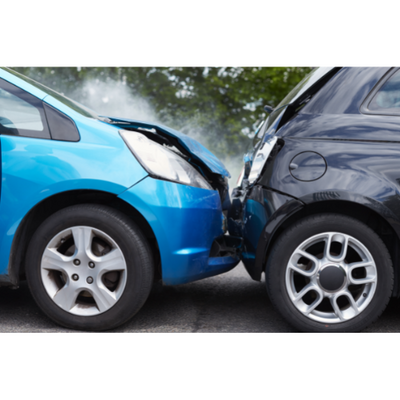- 1-905-452-8193
- Contact Us
- Member Login
- Get Listed Today
- 220,911 members

One of the first questions after a motor vehicle accident is who was at fault for the accident. Being found at fault for an accident means you’re responsible for the damages. However, the determination of fault is not always cut and dry. A South Carolina car accident lawyer can help you with matters of accident fault and filing a personal injury claim after your accident.
After an accident, the details of what happened prior to and during the accident are used to determine who's at fault or responsible for the accident. Basically, it’s assigning blame through negligence. Being negligent when behind the wheel means that the victim harmed by the driver's negligent actions can seek damages.
There are four elements that combine to determine if an action was negligent or not. These include the person having a duty, the person breaching that duty, that breach in their duty causing the action, and damages resulting from the breach of duty.
For example, a driver has the duty to drive without impairment, and if they drive drunk and cause an accident with damage, they breach their duty to drive sober and would be found at fault for the accident. Another example would be someone turning left across traffic that didn't yield to oncoming traffic because they didn't look. They had a duty to yield to the traffic that had the right of way and breached that duty by going when it was not their turn and causing an accident.
Some accidents are more straightforward to determine fault than others, such as when a distracted driver rear-ends the vehicle in front of them at a stoplight or when a driver is impaired. The fault assigned for an accident is determined using eyewitness statements, collected evidence, and investigations performed by police officers and private investigators.
The fault is typically determined through an investigation of the events and evidence of the accident. Law enforcement officers responding to the scene of the accident will speak to the witnesses, collect evidence, and investigate the incident. During this process, the officers investigating will decide if the drivers broke any laws and if any charges should be filed against the offender. The officers may determine if the driver or drivers are at fault, but it’s not always noted in the police report. Police reports are just one piece of the puzzle, but the police report alone cannot be used in a trial as evidence.
Since the accident report cannot be used as evidence, you may think it’s not essential. However, it can be used in cases when the claim doesn't go to trial to be used by the insurance companies in determining the potential payout. Claims adjusters through the insurance company may use the police report and other evidence during their determination. If your case goes to trial, the law enforcement officers can be called in as witnesses and may refer to their report as part of their notes to testify.
Evidence that can be used in finding fault includes:
Witness statements
Pictures of the scene that show the damage, the area of the accident, the weather, and other factors that can impact who’s at fault
Videos from dash cameras, witness videos, and surveillance cameras in the area
Physical evidence, such as tread marks, paint transfer, and similar items
After an accident, it can be hard to think of what you may need in the future, but when possible, it’s imperative to document everything to help determine fault. In addition, your evidence can be used when pursuing your personal injury claim, especially in situations where the involved parties dispute fault.
South Carolina is an at-fault state. As an at-fault state, the person found to be at fault will be responsible for the damages. In addition, the comparative negligence standard assigns a percentage of fault to the parties involved if they contributed to the accident through their negligence. For instance, a driver drove through a stop sign without stopping, and the driver they hit was going over the speed limit. It may be determined that the driver will have a more significant percentage of fault in this incident, but the other driver shares a smaller percentage of fault. Even if you are found partially at fault, you can seek damages, but the percentage of your responsibility will reduce the amount you can pursue. A caveat is that any driver assigned a percentage of fault higher than 50% cannot recover damages for the accident. It can be confusing, and often, getting advice from a South Carolina car accident lawyer can assist you when you disagree with the determination of fault.
If you are in an accident and are not found at fault, there are several damages you can include in your personal injury claim. Potential damages include:
Lost wages, past, present, and future wages, depending on the circumstances
Medical expenses
Rehabilitation
Long-term care
Disfigurements
Pain and suffering
Property damage
Suppose the accident resulted in the death of a loved one in addition to the above damages. In that case, the family could file a claim against the negligent driver for additional damages, such as funeral costs, emotional distress, loss of companionship, lost benefits, and other damages due to the family member’s death.
